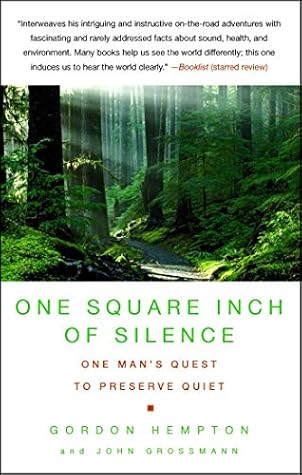Kindle Notes & Highlights
Read between
November 30, 2021 - February 13, 2022
Listening is a wordless process of receiving honest impressions.
If forced, I might say it’s the dawn chorus of songbirds, the sound of the rising sun as it circles the globe. But that would disregard the murmur of winged insects as heard over many square miles in the Kalahari Desert, and if that were my favorite sound, that would ignore the hoot of an owl and the way it bounces off the cypress trees in Louisiana, and also ignore the clang of a church bell after it has echoed down the narrow stone streets of an Austrian village.
Again and again this thunder boomed and echoed, growing ever louder—magnificent, deep, primordial, soul-shaking sounds. I’d never heard thunder like this before.
I understood better after reading John Muir describe his life-changing epiphany as “soul hunger.”
Sitting in my grandfather’s rocking chair next to my woodstove, I realized I could hear the crackle of the fire and the once-familiar gurgling of the refrigerator. Then, as quickly as it had returned, my hearing vanished again.
“along the leafiest and least trodden path possible,”
the man Americans know best as the father of our national parks.
Protect that single square inch of land from noise pollution, and quiet will prevail over a much larger area of the park.
My hope is that this simple and, I believe, inexpensive method of soundscape natural resource management will prove both an inspiration and a helpful mechanism for the National Park Service to meet several under-attended, codified goals, namely, preserving and protecting the natural soundscapes of its parklands and restoring those soundscapes degraded by human noise.
See how nature—trees, flowers, grass—grows in silence; see the stars, the moon and the sun—how they move in silence…. We need silence to be able to touch souls.
quiet place affords a sanctuary for the soul, where the difference between right and wrong becomes more readily apparent.


